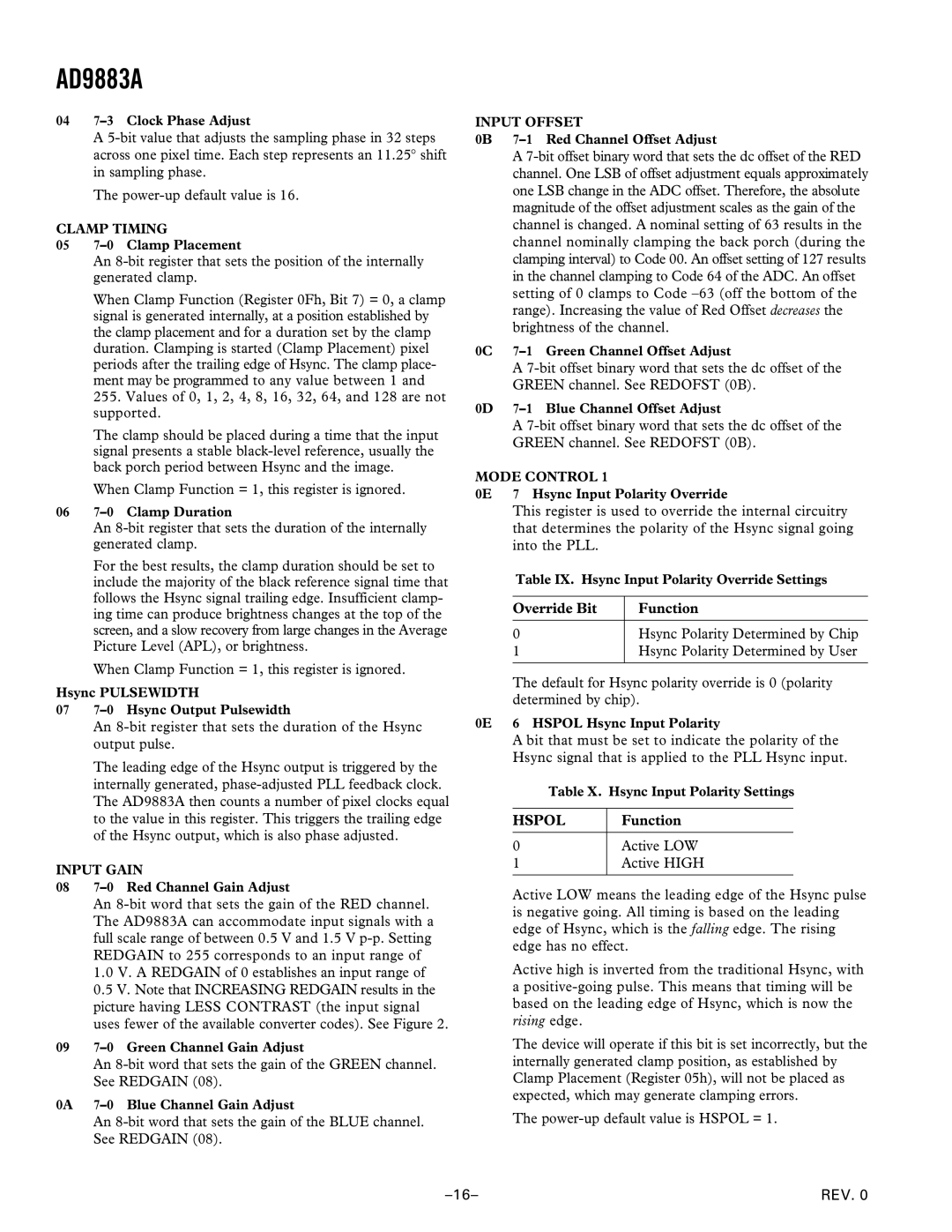AD9883A
04
A
The power-up default value is 16.
CLAMP TIMING
05
An
When Clamp Function (Register 0Fh, Bit 7) = 0, a clamp signal is generated internally, at a position established by the clamp placement and for a duration set by the clamp duration. Clamping is started (Clamp Placement) pixel periods after the trailing edge of Hsync. The clamp place- ment may be programmed to any value between 1 and 255. Values of 0, 1, 2, 4, 8, 16, 32, 64, and 128 are not supported.
The clamp should be placed during a time that the input signal presents a stable
When Clamp Function = 1, this register is ignored.
06
An
For the best results, the clamp duration should be set to include the majority of the black reference signal time that follows the Hsync signal trailing edge. Insufficient clamp- ing time can produce brightness changes at the top of the screen, and a slow recovery from large changes in the Average Picture Level (APL), or brightness.
When Clamp Function = 1, this register is ignored.
Hsync PULSEWIDTH
07
An
The leading edge of the Hsync output is triggered by the internally generated,
INPUT GAIN
08
An
1.0V. A REDGAIN of 0 establishes an input range of
0.5V. Note that INCREASING REDGAIN results in the picture having LESS CONTRAST (the input signal uses fewer of the available converter codes). See Figure 2.
09
An
0A
An
INPUT OFFSET
0B 7–1 Red Channel Offset Adjust
A
0C
A
0D
A
MODE CONTROL 1
0E 7 Hsync Input Polarity Override
This register is used to override the internal circuitry that determines the polarity of the Hsync signal going into the PLL.
Table IX. Hsync Input Polarity Override Settings
Override Bit | Function |
|
|
0 | Hsync Polarity Determined by Chip |
1 | Hsync Polarity Determined by User |
|
|
The default for Hsync polarity override is 0 (polarity determined by chip).
0E 6 HSPOL Hsync Input Polarity
A bit that must be set to indicate the polarity of the Hsync signal that is applied to the PLL Hsync input.
Table X. Hsync Input Polarity Settings
HSPOL | Function |
|
|
0 | Active LOW |
1 | Active HIGH |
|
|
Active LOW means the leading edge of the Hsync pulse is negative going. All timing is based on the leading edge of Hsync, which is the falling edge. The rising edge has no effect.
Active high is inverted from the traditional Hsync, with
a
The device will operate if this bit is set incorrectly, but the internally generated clamp position, as established by Clamp Placement (Register 05h), will not be placed as expected, which may generate clamping errors.
The
REV. 0 |
